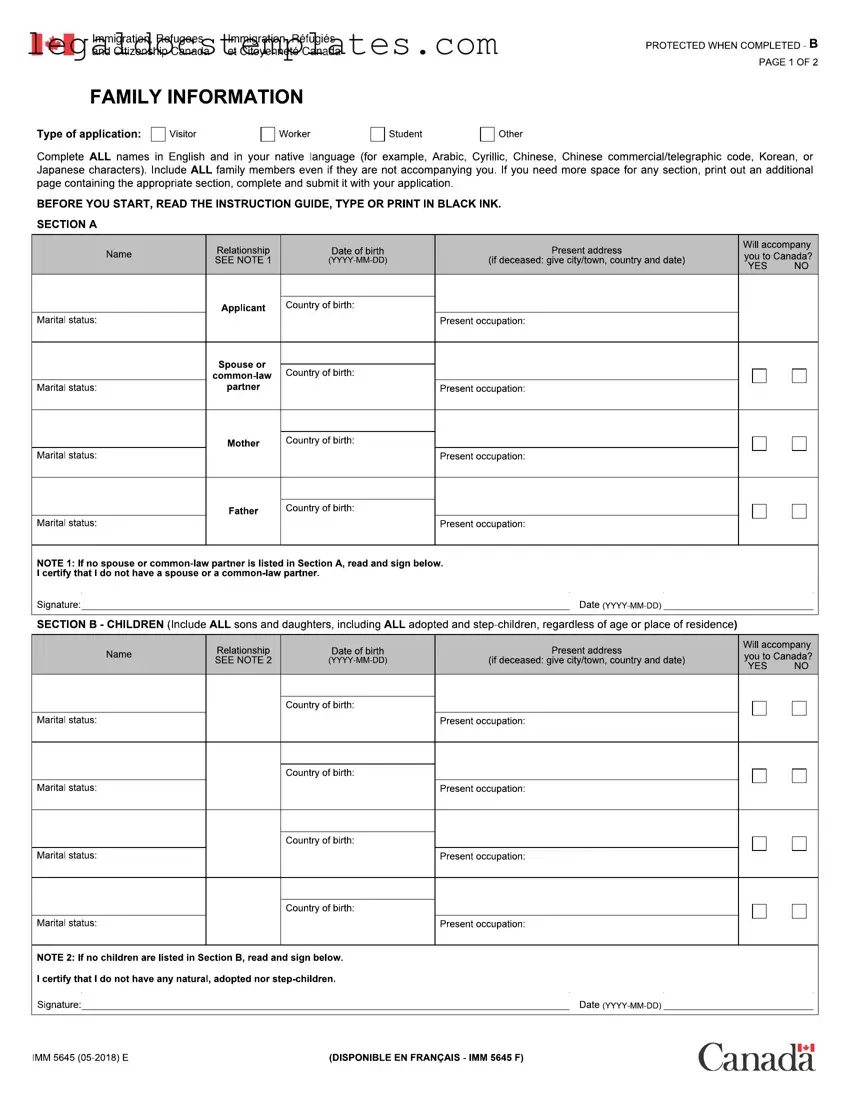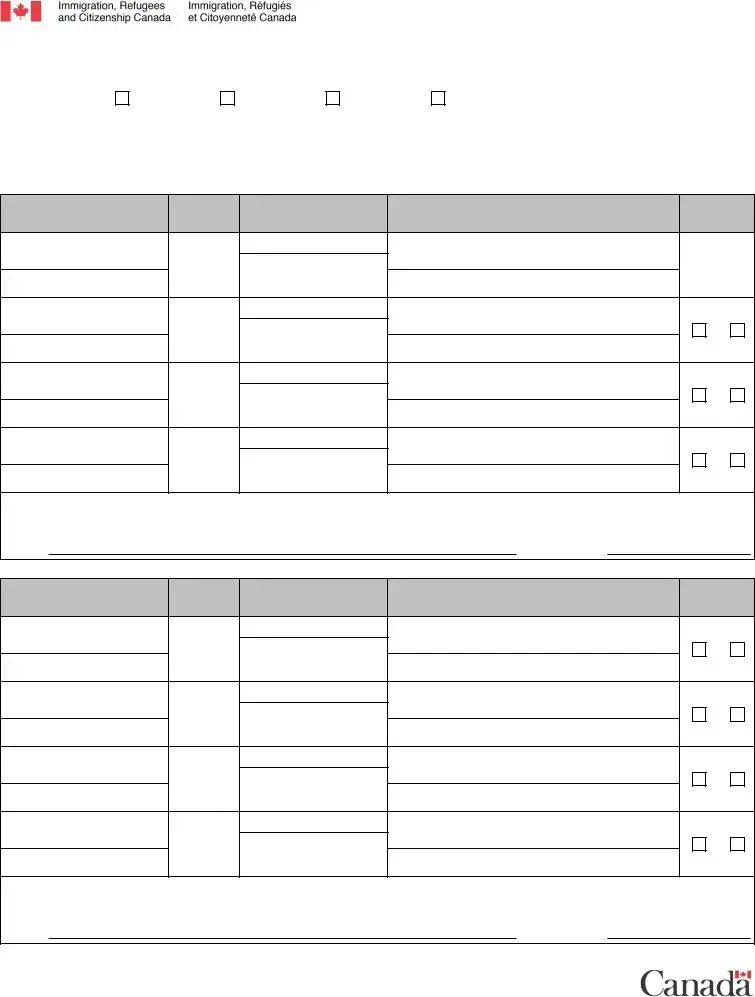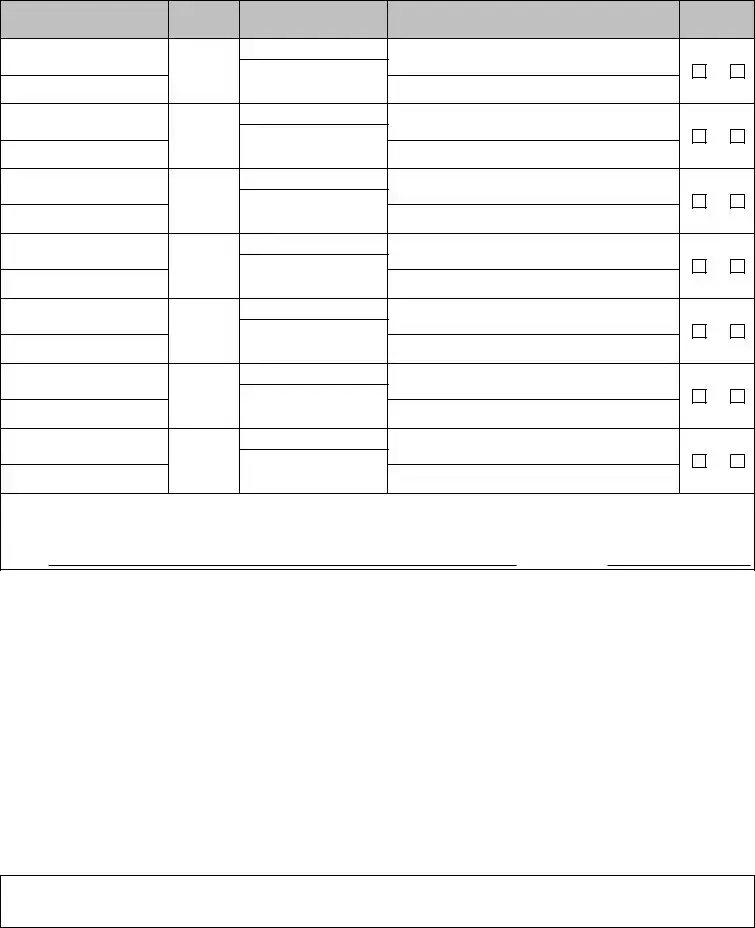The DS-160 form used by the U.S. Department of State for non-immigrant visa applications shares similarities with the IMM 5645 form. Like IMM 5645, the DS-160 form requires applicants to provide personal information, including their name in English and native alphabet, relationship details, and employment history. Both forms are essential in assessing the eligibility and intentions of individuals seeking temporary residency in a foreign country, whether for tourism, work, or study purposes.
Another document resembling the IMM 5645 form is the Form I-130, Petition for Alien Relative, used by U.S. Citizenship and Immigration Services (USCIS). This form gathers detailed family information to establish relationships between a U.S. citizen or lawful permanent resident and their foreign relatives. While the IMM 5645 focuses on the applicant's immediate family details for immigration purposes, the Form I-130 zeroes in on the relationship necessary for family-based immigration.
UK's Visa and Immigration Family Settlement Application Form also parallels the IMM 5645 form. It requires applicants to fill in comprehensive family details for immigration purposes. Both documents aim to identify family members who may accompany the applicant or remain abroad, reflecting a country’s effort to understand the familial backgrounds of incoming immigrants.
Australia’s Form 47A, Details of Child or Other Dependent Family Member Aged 18 Years or Over, bears resemblance to the IMM 5645. Though it specifically focuses on dependents 18 or older, it similarly mandates the provision of detailed personal and familial information to assess the eligibility of family members accompanying the main applicant or migrating later.
Form BI-1738 from the Department of Home Affairs in South Africa, utilized for visa and temporary resident permit applications, shares characteristics with the IMM 5645 form. Both require detailed family information to process applications for individuals looking to enter the country, whether for a short stay or with the intention to emigrate.
The Schengen Visa Application Form used by countries within the Schengen Area is another document analogous to IMM 5645. It asks for personal details and family information, similar to what is required for Canadian immigration purposes, to evaluate entries into the area which allows border control-free travel across member states.
New Zealand's INZ 1025 Sponsorship Form for Temporary Entry also has elements in common with the IMM 5645 form. Sponsors must provide detailed information about themselves and the applicants, including the family details of those they are sponsoring for a visa, highlighting the importance of understanding personal connections in the immigration process.
The Dependent Visa Application form used by various countries requires applicants to include information about family members, much like the IMM 5645 form. This type of application is crucial for families looking to stay together when one member is working or studying abroad, thereby necessitating detailed personal and familial information.
Form DS-260, Immigrant Visa Electronic Application, used in the U.S. immigration process, is similar to the IMM 5645 form as well. It collects comprehensive background information on applicants, including family details, to be reviewed as part of the visa issuance process for those seeking to reside in the U.S. permanently.
Lastly, the UAE’s Entry Permit Application requires family information akin to what is asked for in the IMM 5645 form. Applicants must detail their familial ties, which aids the UAE in managing and understanding the flow of people entering the country on both temporary and long-term bases.


